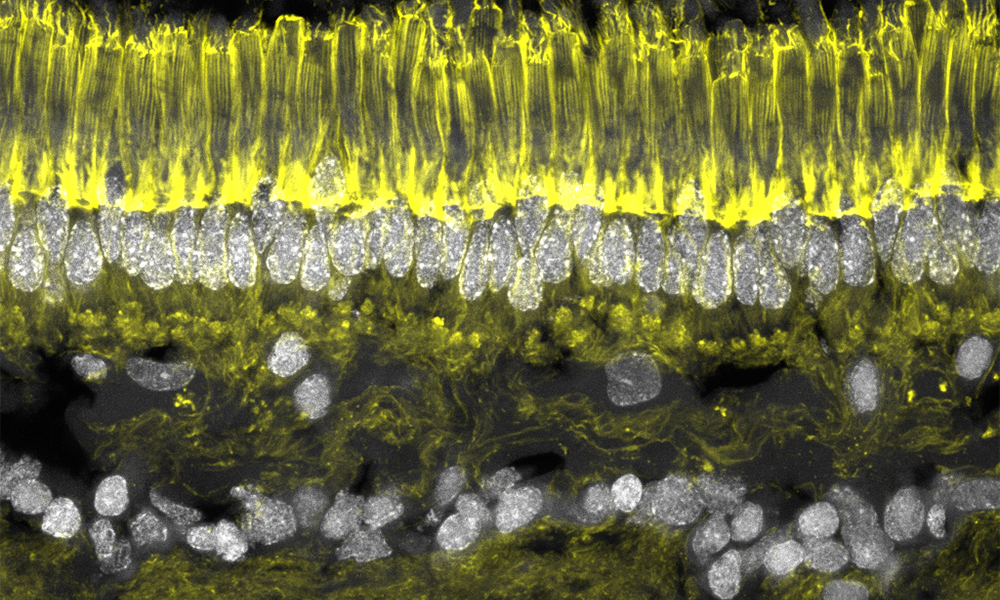
Read the latest Issue

This Picture of the Week shows a stained cryosection of a retina – the light-sensitive part of the eye – of an ancient fish, the lamprey. The image, taken by Philip Oel and Detlev Arendt from EMBL Heidelberg and Henrik Kaessmann from the University of Heidelberg, shows the light-sensing part of the photoreceptor cells highlighted in yellow, and the nuclei of the photoreceptors and the other neurons that help the retina to sense light are in grey. The connections between these cells can be seen as dim yellow, among the grey nuclei.
In studying the retina of the lamprey, Phillip Oel tries to understand what kind of light-sensitive cells our very distant ancestors had. In order to learn about animals that lived so long ago, researchers have to compare many different animals to each other. By using information on human eyes they can check which similarities we share with the distantly related lamprey. Usually, things we humans have in common with such animals are also very old, so we can learn a little about our ancestors with these comparisons.
The image was taken by cutting thin slices of retina onto glass slides and then imaging them with a Leica SP8 confocal microscope.
Credit: Phillip Oel & Detlev Arendt/EMBL, Henrik Kaessmann/Uni Heidelberg
If you have a stunning picture of your science, your lab or your site, you can submit it here.
Looking for past print editions of EMBLetc.? Browse our archive, going back 20 years.
EMBLetc. archive